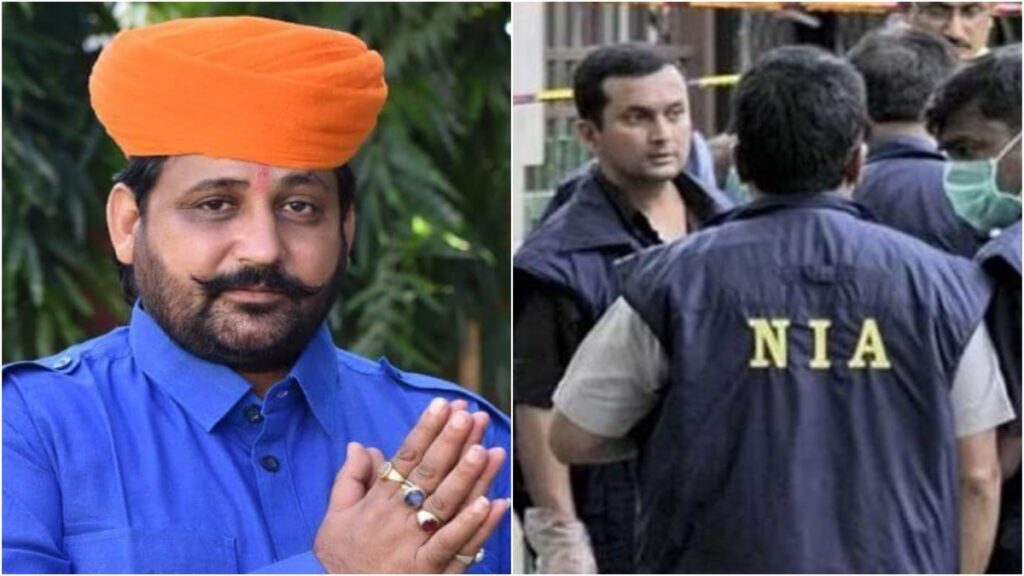
New Delhi
Ashok Meghwal, the primary suspect in the brutal killing of Karni Sena leader Sukhdev Singh Gogamedi at his Jaipur residence last month, has been taken into custody. A total of nine individuals have been arrested in connection with the case.
The arrest follows 10 hours of extensive raids by three teams from the National Investigation Agency (NIA) in a village near Pilani, Rajasthan. The NIA conducted raids at 31 locations in Rajasthan and Haryana as part of their thorough investigation.
During the operation, officials confiscated eight illicit weapons from Ashok Meghwal. Further questioning of Meghwal uncovered details about the delivery of an additional 22 weapons. Meghwal was allegedly in contact with gangster Rohit Godara, associated with the Lawrence Bishnoi gang, who had claimed responsibility for the murder.
On December 5, Sukhdev Singh Gogamedi, a prominent Rajput leader, was enjoying tea with four men at his Jaipur residence around noon. Suddenly, in the midst of their conversation, two of the men stood up and fired indiscriminately at Mr. Gogamedi, leaving him sprawled in a pool of blood on the floor.
Amid the exchange of gunfire, one of the three shooters, identified as Naveen Singh Shekhawat, lost his life. Mr. Gogamedi’s security guard suffered critical injuries during the shooting.
Rohit Godara, affiliated with the Lawrence Bishnoi gang, has asserted responsibility for the murder. The Rajasthan police is considering four potential reasons for this killing: Karni Sena chief
- After gangster Ankit Bhadu, associated with the Bishnoi gang, committed multiple murders in Ganganagar, a feud intensified between him and Gogamedi.
- Bhadu was killed in a 2019 encounter, and suspicions arose that Gogamedi might have disclosed his details. Since then, the Karni Sena chief has been on the Bishnoi gang’s hit list.
- Gangster Sampat Nehra, currently held in a Bhatinda jail, had intentions to expand his operations into the Churu area, with Gogamedi being a specific target. The Punjab police shared this intelligence with the Rajasthan police through an informational briefing.
- Gangster Anand Pal Singh, killed in a 2017 encounter by Rajasthan police, was reportedly close to Gogamedi. Despite the Karni Sena chief organizing a donation drive in Singh’s name, the funds were allegedly not delivered to Singh’s family.
- Singh’s daughter, Chinu, accused of involvement in several crimes, has reportedly issued threats to Gogamedi on multiple occasions and is suspected to be connected to his murder.
- Chotu Bhatt, formerly a close ally of Gogamedi, is now associated with the Lawrence Bishnoi gang and is believed to be a potential mastermind behind the assault.
- The Rajasthan police posits that this incident may be a retaliatory killing, highlighting that Sukhdev Singh Gogamedi had a contentious history. The denial of police security, a request he had been making since 2016, was attributed to his perceived lack of a saintly reputation.